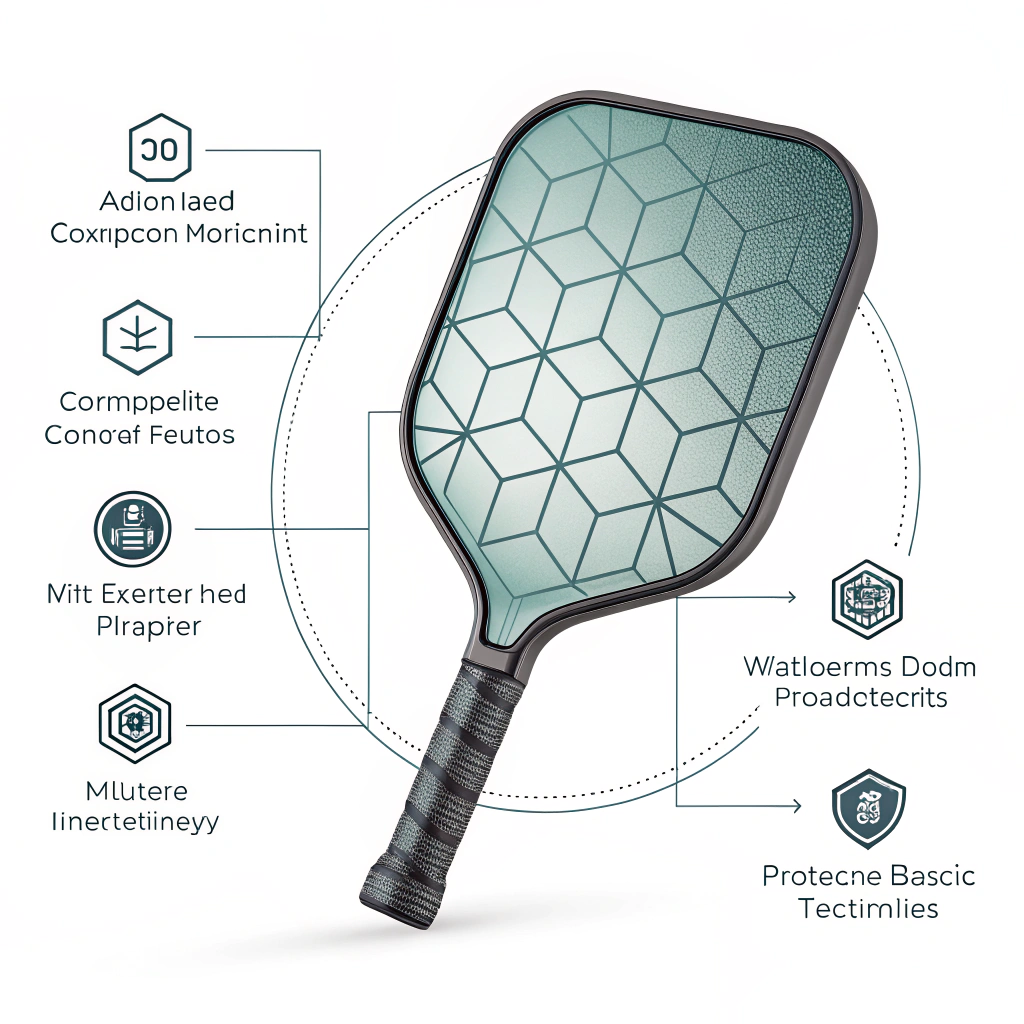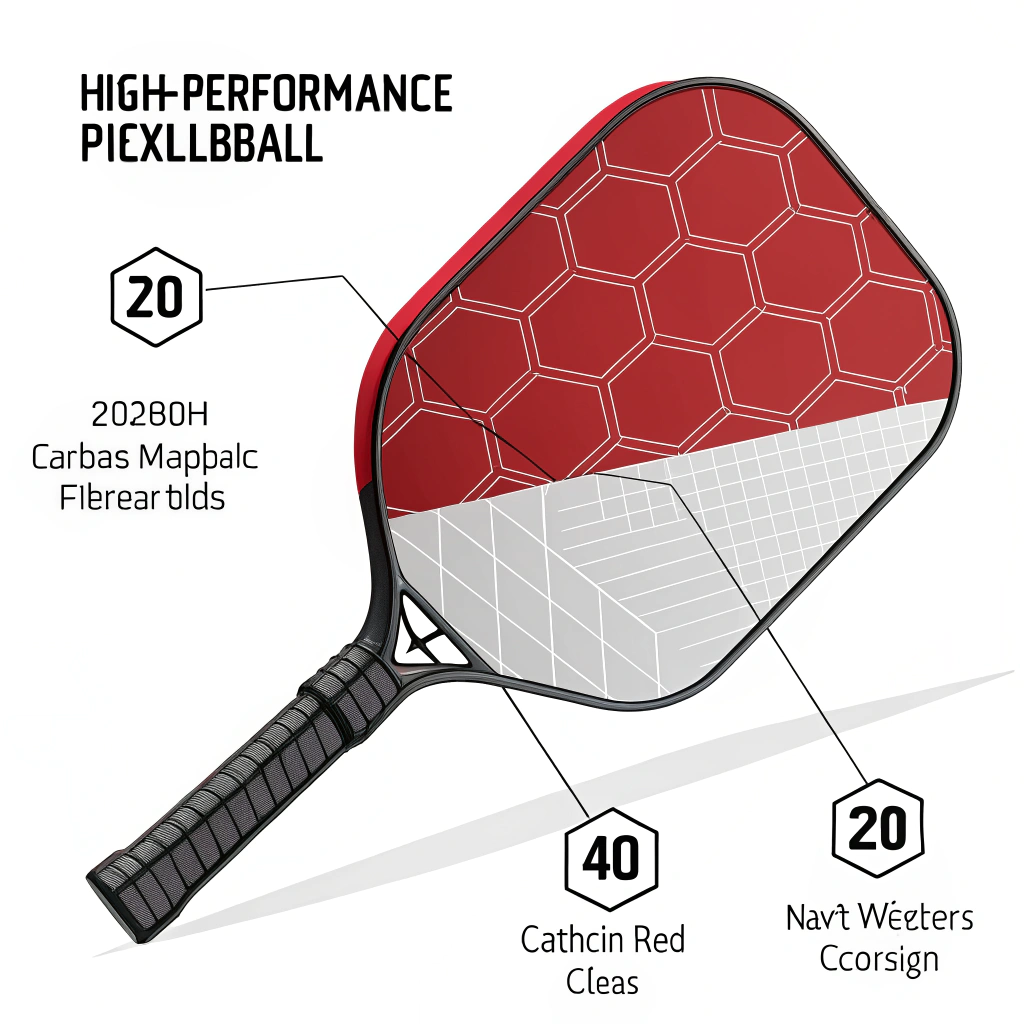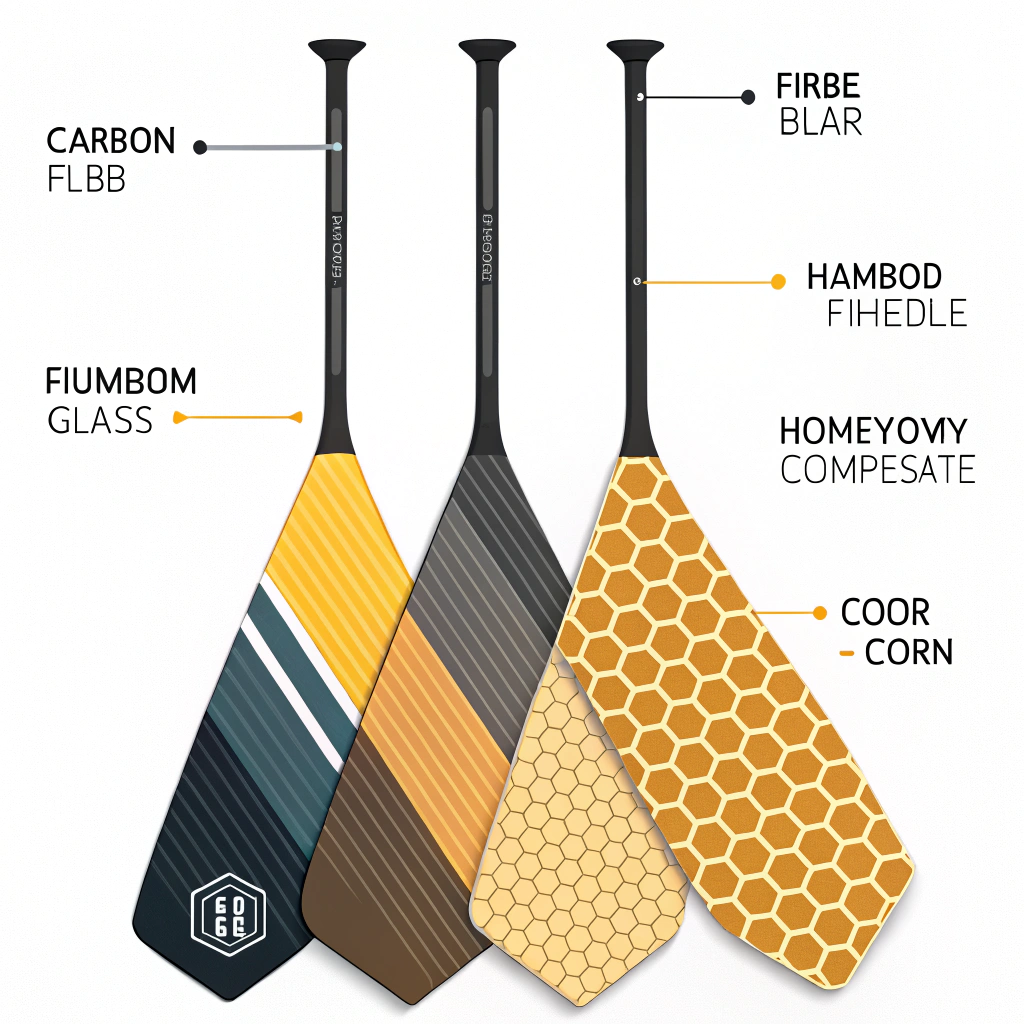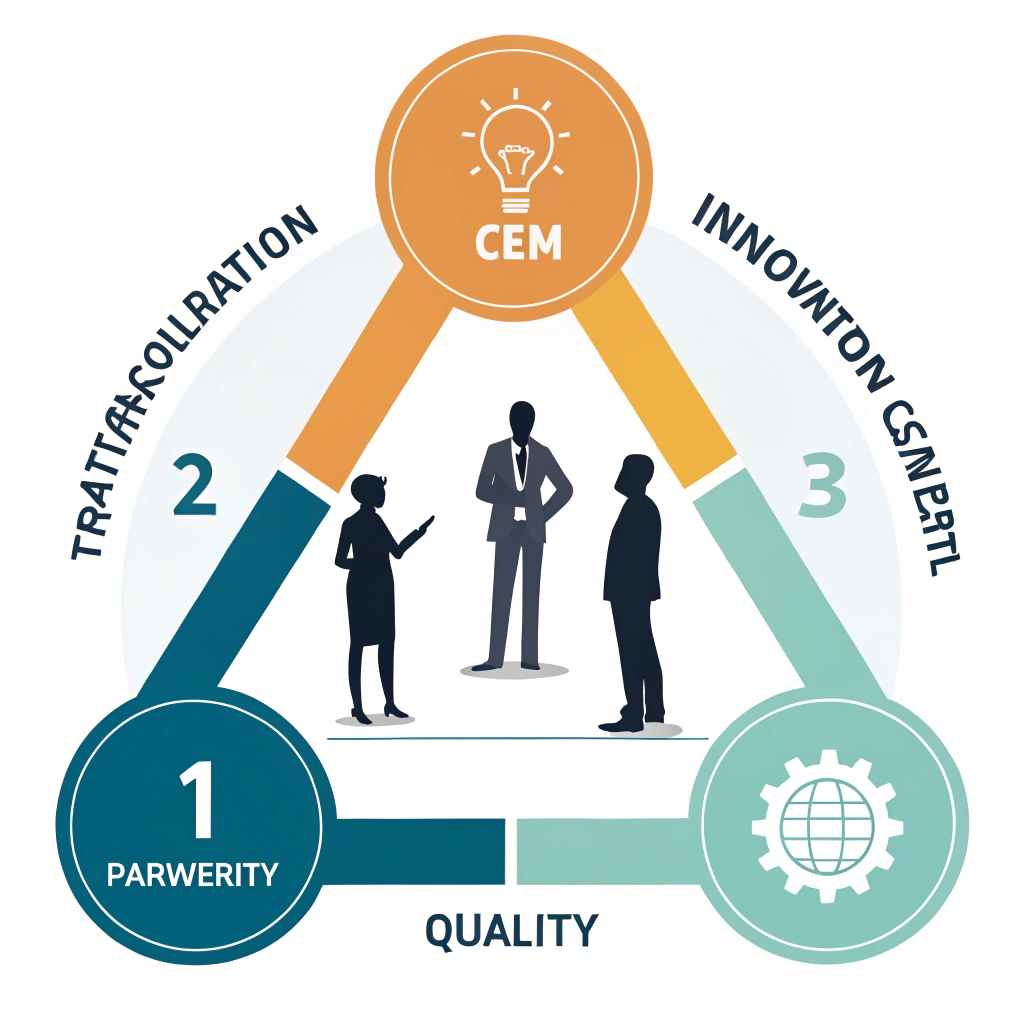In a nutshell, selecting the right OEM partner for high-performance pickleball paddles requires a clear understanding of technical specifications, production processes, and quality control to ensure that your brand stands out in a competitive market.
Businesses looking for a dependable OEM partner must evaluate several critical factors, including material composition, advanced manufacturing processes, and quality standards. In today’s highly competitive sports equipment market, partnering with a manufacturer like NEX Pickleball—which blends state-of-the-art production techniques, premium materials such as carbon fiber1 and fiberglass2—can serve as a key differentiator for your brand. This article provides an analytical guide to help you confidently select an OEM manufacturer for pickleball paddles and build a winning product portfolio.
Choosing an OEM partner is more than a transactional decision; it is a long-term strategic investment in your brand’s quality and reputation. Many businesses face several challenges when evaluating manufacturing partners:
• Lack of clarity on technical specifications and production capabilities.
• Uncertainty regarding material consistency when multiple advanced materials such as 3K, 12K, T300 carbon fiber or fiberglass are in play.
• Difficulty in comparing production processes like hot pressing, cold pressing, and thermoforming.
• Ensuring that customization options meet the unique needs of your target market.
These challenges necessitate a detailed comparison approach that focuses on both engineering excellence and market trends.
At NEX Pickleball, several types of carbon fiber—each with distinct advantages—are employed to ensure superior paddle performance:
• 3K Carbon Fiber: Widely used for its excellent strength, flexibility, and vibration reduction, making it ideal for high-rebound paddles.
• 12K Carbon Fiber: With a denser thread configuration, this material provides a smoother surface, enhanced hardness, and robust durability.
• T300 Carbon Fiber: Known for its high tensile strength, offering a lightweight yet powerful solution.
Each variant can be chosen to meet specific performance requirements, whether you need extra control or power, for competitive environments or recreational play.
Fiberglass offers a unique balance between power and control, presenting a broader sweet spot which is crucial for player precision. At the same time, composite materials improve paddle performance by combining the best attributes of two distinct materials. Notable composite options include:
• Carbon Fiber & Fiberglass Composite: Merges strength and flexibility for players who demand enhanced ball control yet require considerable power.
• Bamboo Core Composite: Provides a lightweight structure with high-impact resistance, ideal for long-term play without sacrificing performance.
• Honeycomb Core: Utilizes high-density polymer or pulp to reduce vibration and increase shock absorption, making paddles more durable.
These advanced materials contribute directly to ball speed, spin control, and overall paddle responsiveness—a crucial area for OEM-customized solutions targeting professional and enthusiastic players.
Understanding the production processes is vital when comparing OEM partners. Different methods bring distinct advantages and trade-offs in the final paddle product's performance and durability.
Hot pressing involves heating and applying pressure to form a paddle. Its attributes include:
• High production efficiency suitable for large-scale manufacturing.
• Enhanced structural integrity and impact resistance.
• Slight alteration to material properties, potentially affecting feel.
Cold pressing is performed at room temperature under significant mechanical pressure:
• Offers precise control over paddle thickness and structural consistency.
• Retains the intrinsic material properties, resulting in better control and responsiveness.
• Has a longer production cycle which may impact overall efficiency.
In thermoforming, the material is heated to a softening point and then molded:
• Permits intricate designs with tailored material distribution and stability.
• Best suited for premium or custom paddle production due to longer cycle times and higher equipment costs.
Below is a summary table comparing these processes:
| Production Process | Advantages | Disadvantages |
|---|---|---|
| Hot Pressing | High efficiency, strong impact resistance | Possible alteration of material properties |
| Cold Pressing | Precise thickness control, intact material feel | Longer production cycle |
| Thermoforming | Intricate design, consistent performance | Longer cycle times, high equipment cost |
This detailed comparison helps you factor in not only cost and efficiency but also the end-user experience—one of the key elements in brand differentiation.
Based on the comparative analysis of materials and production processes, here are several strategic recommendations to guide your decision-making:
-
Evaluate Material Needs:
Clearly define the performance attributes your paddle requires. Whether you prioritize speed, control, or durability, aligning these needs with the right material—in terms of carbon fiber type or composite blend—is critical for meeting market standards. -
Assess Production Capabilities:
Consider whether you need bulk production with quick turnaround times or specialized processes for custom orders. A partner using a mix of hot pressing for efficiency and thermoforming for customized designs could provide the balance needed for diverse market demands. -
Quality Control and Customization:
Ensure the OEM partner enforces rigorous quality systems. At NEX Pickleball, every paddle undergoes extensive testing to confirm its strength, stability, and performance. Look for certifications or case studies that demonstrate consistent quality control. -
Customization Flexibility:
A standout OEM partner should offer a range of customization options—from grip sizes and weight distributions to bespoke graphic designs enabled by on-demand printing. This flexibility not only enhances product uniqueness but also supports branding initiatives and market responsiveness. -
Long-Term Partnership Opportunities:
Beyond the technical aspects, invest in an OEM partner with a strong reputation and long-term vision. A partner who continuously invests in research and development will help you stay ahead of market trends and maintain a competitive edge.
Many sports equipment markets are increasingly leaning towards high-performance, technologically advanced products. Key trends include:
• An upsurge in demand for precision-engineered products that offer a perfect blend of power, control, and durability.
• The growing popularity of customization in sports gear, where branding is as important as performance.
• Rising consumer expectations for sustainable and long-lasting products, driving manufacturers like NEX Pickleball to continuously improve production methods and material quality.
By aligning your purchasing strategy with these industry trends, you can ensure that your product portfolio meets current market demands while being adaptable for future trends. Data from client case studies shows that partners who invest in advanced OEM solutions often see a significant improvement in market penetration and consumer satisfaction, translating directly into increased brand loyalty and revenue.
Consider a hypothetical case where a mid-sized pickleball brand sought to revitalize its lineup amidst fierce market competition. The brand required paddles that combined cutting-edge technology with artistic design flair. By choosing an OEM partner that offered both advanced material solutions (such as a composite blend of carbon fiber and fiberglass) and flexible production techniques (integrating thermoforming and cold pressing), the brand was able to:
• Achieve a consistent balance of power and control in every paddle produced.
• Customize paddle designs with rapid on-demand print services that enhanced brand identity.
• Secure long-term reliability with built-in quality control measures and rigorous testing protocols.
This strategic collaboration resulted in the brand significantly differentiating itself from competitors, reinforcing its market presence, and cultivating a loyal customer base. The case underscores the importance of aligning technical expertise with business needs when forming an OEM partnership.
When selecting an OEM partner for high-performance pickleball paddles, consider these factors as pillars of success:
• Material selection should align with your performance needs.
• Production processes must support both scalability and quality.
• Robust quality control and flexible customization options are non-negotiable in today’s competitive market.
By integrating these insights into your strategic decision-making, you not only secure a reliable supply chain but also position your brand to thrive in a fast-paced, innovation-driven industry. Whether you target professional athletes or recreational players, the right OEM partner, like NEX Pickleball, can help ensure your product meets the highest standards of performance and durability.
Act now by engaging in detailed technical discussions with potential OEM partners, reviewing case studies, and aligning their capabilities with your business objectives. In doing so, you pave the way for a successful, long-term collaboration that will boost your market credibility and drive brand growth.
People Also Ask
Q1: What factors should be considered when selecting an OEM partner for pickleball paddles?
A1: Key factors include evaluating the material choices (such as different types of carbon fiber and composites), production processes (hot pressing, cold pressing, thermoforming), quality control measures, and customization capabilities to ensure the supplier meets both performance and branding requirements.
Q2: How do production processes like hot pressing, cold pressing, and thermoforming affect paddle performance?
A2: Hot pressing delivers high efficiency and strong impact resistance but might alter material feel; cold pressing preserves material properties for better control; while thermoforming allows intricate design and precise material distribution, ideal for premium products, despite longer production times.
Q3: Why is customization important in selecting an OEM partner for sports equipment?
A3: Customization is critical as it enables brands to differentiate their products through unique design elements, specific performance adjustments, and on-demand printing, ultimately enhancing brand identity and meeting diverse consumer needs.
-
carbon fiber: Click to learn about the unique properties of carbon fiber, including its strength-to-weight ratio and role in enhancing high-performance sports equipment. ↩ ↩
-
fiberglass: Click to explore how fiberglass contributes to the durability and performance of sports gear by offering a balance of strength and flexibility. ↩ ↩
-
Hot pressing: Click to understand how the hot pressing process uses heat and pressure to improve production efficiency and structural integrity. ↩ ↩
-
Cold pressing: Click to discover the benefits of cold pressing, a process that maintains material integrity and allows for precise control over product dimensions. ↩ ↩
-
Thermoforming: Click to examine the thermoforming process, which permits intricate designs and tailored material performance by molding plastics at specific temperatures. ↩ ↩







